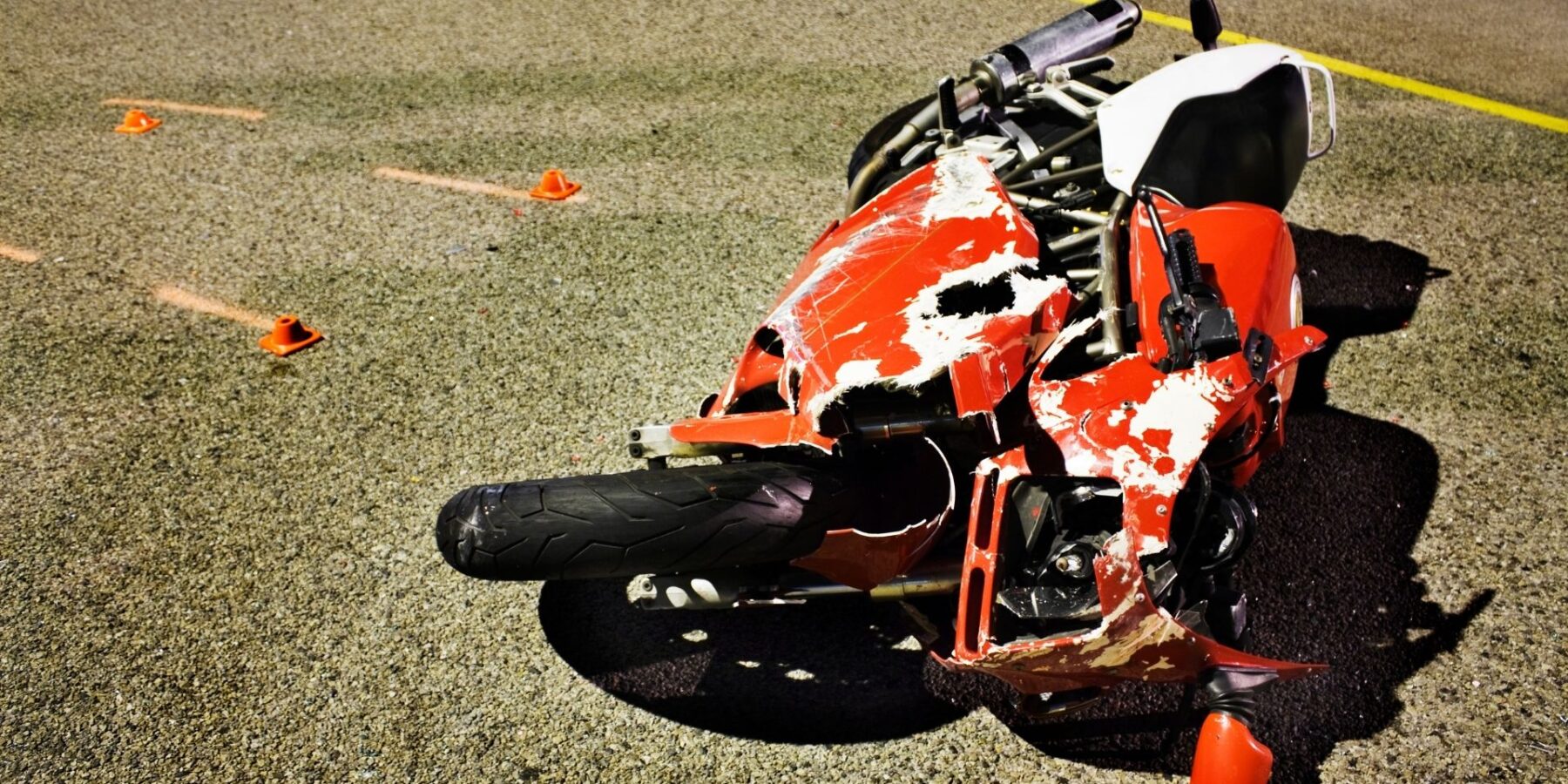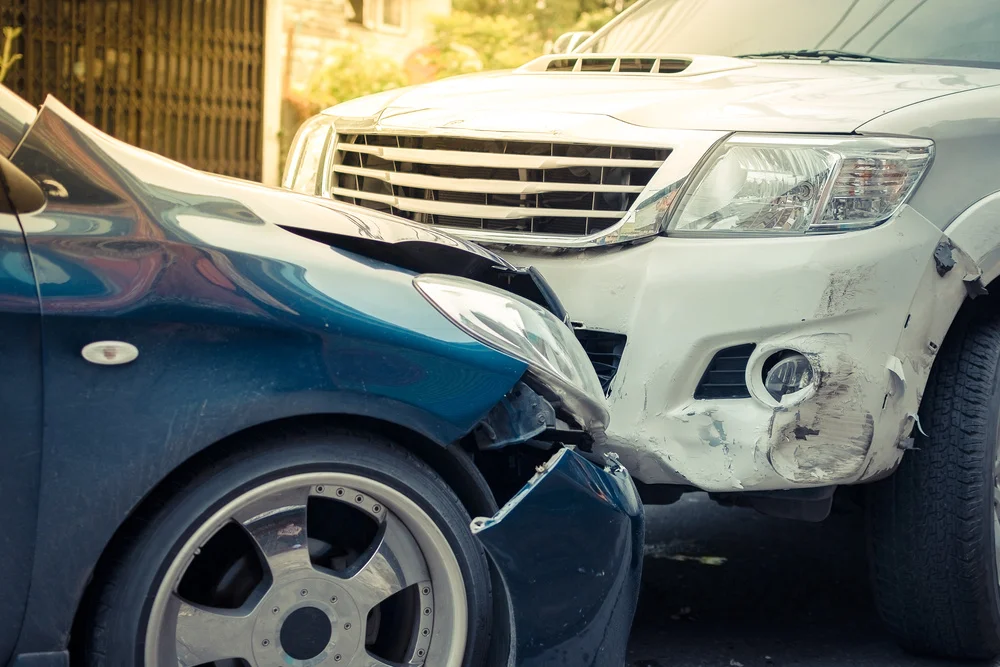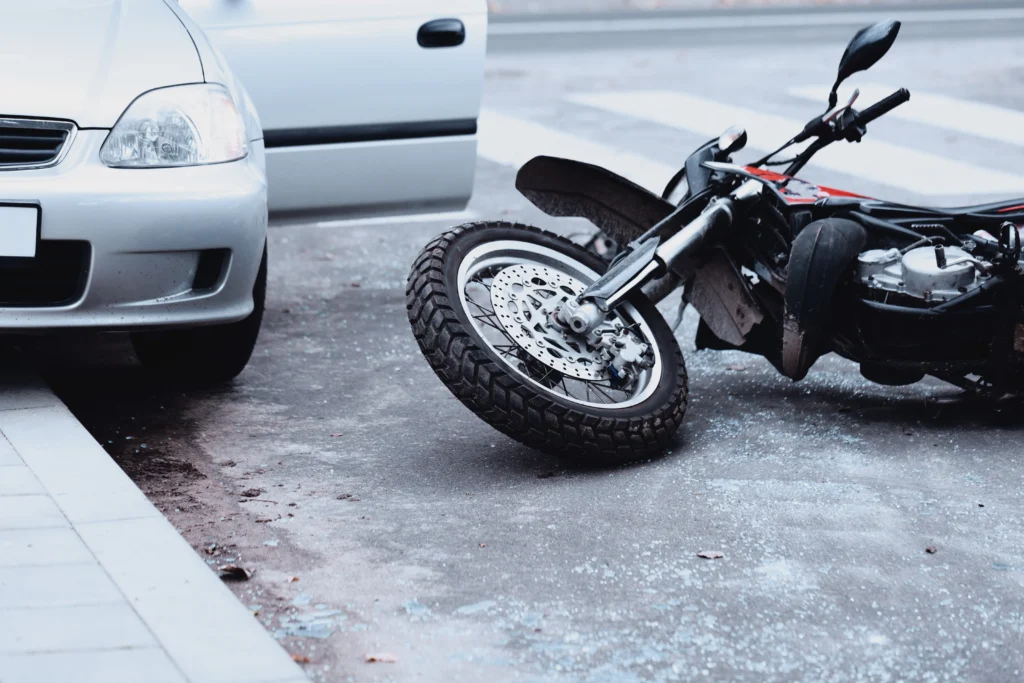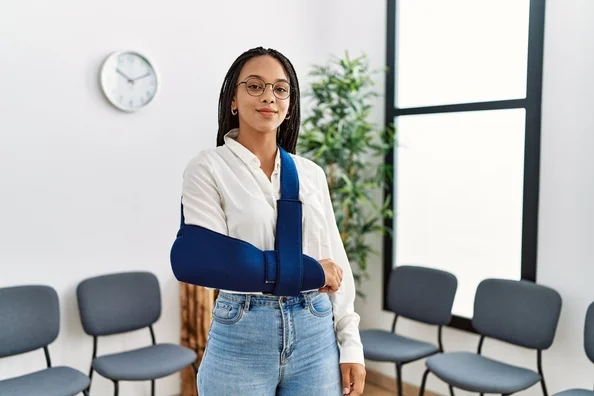Reno Motorcycle Accident Attorney
Motorcycle accidents in Reno often lead to devastating injuries, high medical bills, and long recovery periods. Riders are far more exposed than occupants of passenger vehicles, which means even low-speed crashes can result in life-altering trauma. If you or a loved one has been injured in a motorcycle accident, it’s important to speak with a personal injury attorney who understands Nevada traffic laws and how to build a strong injury claim.
At Ed Bernstein Injury Lawyers, we’re here to help you fight for the compensation you deserve. Our experienced Reno motorcycle accident attorneys understand the unique challenges riders face on the road and in the legal system.
Schedule a free consultation with a Reno motorcycle accident lawyer today by visiting www.carcrashlawyernevada.com. We’re here to help when you need us most.
Common Causes of Motorcycle Accidents in Reno
Motorcycle accidents are often the result of negligence, whether from other drivers, dangerous road conditions, or even defective parts. Understanding what caused your accident is key to building a strong personal injury claim.
Distracted Driving
One of the leading causes of motorcycle collisions is distracted driving. Drivers who are texting, eating, adjusting the radio, or using in-car navigation systems may fail to see a motorcycle in time to avoid a crash.
According to the National Highway Traffic Safety Administration (NHTSA), distracted driving claimed over 3,000 lives in 2022 alone. For motorcyclists, the risks are even greater due to their smaller size and reduced visibility.
Unsafe Lane Changes
Motorcycles can easily fall into a driver’s blind spot. When a vehicle changes lanes without properly checking mirrors or signaling, it puts riders at extreme risk. Unsafe lane changes are a frequent cause of serious sideswipe and merging accidents.
Speeding and Reckless Driving
Excessive speed reduces a driver’s ability to react in time to avoid a motorcycle. Aggressive driving, tailgating, and road rage incidents can also escalate into dangerous encounters on Reno highways and city streets.
Failure to Yield the Right of Way
Intersections are especially hazardous for riders. Drivers often fail to yield the right of way when turning left, putting motorcyclists at risk of being struck head-on or broadsided. This type of collision is one of the deadliest scenarios for riders.
Hazardous Road Conditions
Loose gravel, potholes, uneven pavement, or construction zones pose much more danger to motorcyclists than other drivers. If your crash was caused by poor road maintenance, a government entity may be liable.
Injuries Common in Reno Motorcycle Accidents
Motorcycle accident victims in Reno often suffer catastrophic injuries that impact every aspect of their lives, from physical mobility to financial stability. Without the protection of airbags or metal framing, riders are far more vulnerable to severe trauma. These injuries can result in long-term disability, steep medical expenses, and emotional distress that lasts well beyond the initial crash.
Seeking immediate medical care and legal support after a motorcycle crash is essential to protect both your health and your right to compensation. Below are some of the most common injuries sustained by riders in Nevada motorcycle accidents.
Traumatic Brain Injuries (TBI)
Head injuries are among the most serious outcomes of a motorcycle accident. Even with a helmet, riders are still at risk of traumatic brain injuries. A TBI can lead to lasting cognitive impairments, personality changes, and memory loss.
According to the CDC, TBIs contribute to nearly one-third of all injury-related deaths in the U.S., and motorcycle crashes are a leading cause in younger populations. These injuries often require prolonged rehabilitation, neurological care, and specialized therapy.
Spinal Cord Injuries and Paralysis
Damage to the spinal cord can permanently alter a victim’s life. Depending on the severity and location of the injury, the outcome may include paraplegia, quadriplegia, or partial mobility loss. These injuries typically require expensive lifelong care, including in-home assistance, mobility equipment, and accessibility modifications to living spaces.
The Christopher & Dana Reeve Foundation estimates that the average lifetime cost of living with a spinal cord injury ranges from $1.5 million to over $4 million, depending on age and level of impairment.
Compound Fractures and Broken Bones
Motorcyclists frequently sustain complex bone fractures during an accident, especially in the legs, arms, collarbone, pelvis, and ribs. Compound fractures, where the bone pierces the skin, often require surgery and can carry a high risk of infection or nerve damage.
Some victims may need multiple surgeries, metal plates or rods, and months of physical therapy to recover partial mobility. In some cases, the injuries can lead to permanent loss of function or chronic pain.
Road Rash and Skin Abrasions
When a rider is thrown from a bike and slides along the pavement, severe skin abrasions, known as road rash, can occur. Road rash isn’t just a surface wound, deep abrasions can expose muscle, nerves, and bone, and often require skin grafts or reconstructive surgery.
The American Academy of Dermatology warns that improperly treated wounds like these can lead to long-term scarring, infection, and permanent disfigurement.
Internal Bleeding and Organ Damage
High-impact crashes can cause internal trauma that isn’t visible right away. Internal bleeding, damage to the lungs, liver, spleen, or kidneys, and ruptured blood vessels may not present immediate symptoms but can be fatal without prompt treatment. After any motorcycle crash, it’s critical to undergo a full medical evaluation, even if you feel “fine” at first.
What to Do After a Motorcycle Accident in Reno
A motorcycle crash is traumatic and disorienting. In the moments that follow, it’s easy to feel overwhelmed or unsure of what to do. However, taking the correct steps after an accident can protect your health, safeguard your legal rights, and strengthen your ability to pursue fair compensation. Whether you’re dealing with serious injuries or property damage, a clear response plan is critical.
Seek Medical Attention Immediately
Even if you feel okay in the moment, motorcycle accidents can cause hidden injuries that may worsen over time. The force of impact, even at low speeds, is enough to cause concussions, internal bleeding, or spinal trauma, all of which may not show symptoms right away. Seeking prompt medical attention ensures you receive appropriate care and creates a medical record that links your injuries to the crash.
Call 911 and Report the Accident
Always contact emergency services immediately following a motorcycle crash. Request both medical assistance and law enforcement to respond to the scene. When officers arrive, provide honest, concise information without admitting fault or speculation. The police report they generate will serve as an official account of the incident, crucial evidence in your injury claim and future negotiations with insurance companies.
Accept On-Site Medical Help
Paramedics may want to evaluate you at the scene, even if you’re not visibly injured. It’s important to cooperate and allow them to check for head trauma, broken bones, or other internal injuries. Refusing treatment or transportation to a hospital can be used by insurers to argue that your injuries were not serious or weren’t caused by the crash.
Visit a Doctor Within 24 Hours
If you’re not transported directly to the emergency room, make an appointment with a doctor as soon as possible. Be sure to explain the crash and all symptoms you’re experiencing, even minor ones. The Mayo Clinic recommends monitoring for late-appearing symptoms like dizziness, headaches, or abdominal pain, which may indicate internal trauma. This documentation is vital for a successful claim.
Gather and Preserve Evidence
The scene of a motorcycle accident contains vital evidence. What you collect, photos, contact information, and physical items, can be critical in proving fault and the extent of your damages. Preserving these details can mean the difference between a denied claim and a full settlement.
Take Photos and Videos
If you’re physically able, use your phone to take clear photos and videos of everything related to the crash. Document your motorcycle from multiple angles, damage to all vehicles involved, skid marks, debris, nearby signage, and your visible injuries. This visual evidence helps establish how the crash happened and supports your version of events.
Get Contact Information
Gather full names, phone numbers, driver’s license numbers, and insurance information from every party involved. Also make an effort to speak with witnesses who saw the crash occur. Ask for their contact information in case your attorney needs to follow up with them later to provide testimony or a signed statement.
Preserve Your Motorcycle and Gear
Do not rush to repair your bike or discard damaged clothing and safety gear. These items can serve as physical proof of the crash’s severity. Your helmet, jacket, gloves, and even boots may show signs of impact that support your claims about how the accident occurred and the force you endured.
Avoid Costly Legal Mistakes
Insurance companies and defense attorneys are trained to minimize payouts. They may look for anything you say or do that could reduce the value of your claim. Being cautious in your post-accident communication and behavior is essential.
Don’t Talk to Insurance Adjusters Without Legal Counsel
Adjusters from the at-fault driver’s insurance company may contact you within hours of the crash. They may seem friendly or helpful, but their job is to limit liability and avoid a large payout. Politely decline to give a recorded statement or sign anything without consulting your attorney first. A qualified motorcycle accident lawyer can handle all communication on your behalf.
Don’t Post About the Crash on Social Media
It may be tempting to share your experience online, but social media posts can easily be taken out of context. Even photos of you smiling or doing light activities could be used to argue that your injuries are not as serious as claimed. Until your case is resolved, it’s best to avoid public posts entirely.
Filing a Motorcycle Accident Claim in Nevada
Filing a motorcycle accident claim in Nevada involves more than just submitting paperwork. It requires evidence collection, medical documentation, legal strategy, and often negotiations with insurance companies that are not on your side. Knowing the claims process, and your rights under Nevada law, can help ensure you’re not taken advantage of and that you receive the full compensation you deserve.
Understand Nevada’s Fault-Based Insurance System
Nevada follows a fault-based (or “tort”) system for auto and motorcycle accidents. This means the at-fault driver is legally responsible for covering damages. Before you receive any compensation, liability must be proven, whether through police reports, witness testimony, or legal investigation.
Comparative Negligence Rule
Under Nevada Revised Statute §41.141, the state follows a modified comparative negligence rule. You can still recover damages if you are less than 51% at fault for the crash, but your compensation will be reduced by your percentage of fault. For example, if you are awarded $100,000 but found 20% responsible, you’ll only receive $80,000.
The Nevada Legislature website provides official language on this comparative fault rule, which your attorney can further explain based on the specifics of your case.
Notify Your Insurance Provider
After seeking medical attention and gathering evidence, you must notify your own insurance provider about the accident. Be factual and brief, and avoid making statements about who was at fault or the extent of your injuries.
Don’t Rely on Insurance to Do What’s Fair
While you may think your insurance company is there to support you, it’s important to remember they are also protecting their bottom line. Always speak to a lawyer before accepting a settlement offer or making a recorded statement.
Begin Building Your Claim
A successful motorcycle accident claim requires documentation, evidence, and expert legal support. The earlier you start building your claim, the better.
Collect and Organize Documentation
Start a file that includes your medical records, police report, photos of the crash, witness contact information, repair estimates, and a journal documenting your recovery. These materials help establish the severity of your injuries and the financial impact of the accident.
Work with a Motorcycle Accident Attorney
An experienced attorney can investigate the crash, hire expert witnesses, negotiate with insurers, and represent you in court if necessary. Working with a law firm like Ed Bernstein Injury Lawyers ensures you’re not navigating the complex legal system alone.
According to NOLO, personal injury attorneys in Nevada can often help victims secure far higher settlements than they could alone, especially in serious injury cases.
Know the Filing Deadline
Nevada’s statute of limitations for personal injury claims is two years from the date of the accident. Waiting too long to file could mean losing your right to pursue compensation altogether.
Exceptions May Apply
There are rare exceptions. For example, if a government entity is involved or if the injured victim was a minor at the time of the crash. An attorney can help you determine how these rules apply to your case and ensure you don’t miss critical deadlines.
Who Can Be Held Liable in a Reno Motorcycle Accident?
Determining liability is one of the most important, and often most complex, parts of any motorcycle accident claim. In Reno, multiple parties can potentially share responsibility for a crash, depending on how it occurred. Identifying all liable parties helps maximize your potential compensation and ensures no one is let off the hook for negligent behavior.
Negligent Drivers
The most common cause of motorcycle accidents is driver negligence. This includes behaviors like distracted driving, speeding, failing to yield, or operating under the influence.
Inattentive or Distracted Drivers
Drivers who are texting, talking on the phone, eating, or adjusting the radio often fail to see motorcycles. According to the National Highway Traffic Safety Administration (NHTSA), distracted driving is one of the leading causes of injury and fatal crashes nationwide.
Drivers Who Fail to Yield
Many motorcycle accidents occur at intersections when a driver turns left in front of an oncoming motorcycle. Failing to yield the right of way is not only dangerous, it’s illegal under Nevada traffic laws and can place full liability on the turning driver.
Vehicle Manufacturers
If a defective motorcycle part, like faulty brakes or a blown tire, contributed to the crash, the manufacturer of the part or vehicle may be held liable through a product liability claim.
Examples of Motorcycle Defects
- Brake failure
- Faulty throttle systems
- Defective tires or wheels
- Electrical malfunctions
Manufacturers have a legal obligation to ensure their vehicles and components are safe for use. The Consumer Product Safety Commission (CPSC) monitors and recalls defective vehicle parts and equipment. Your attorney may investigate whether any recalls or known defects apply to your bike.
Government Entities
Poor road conditions can be especially dangerous for motorcyclists. Potholes, loose gravel, lack of signage, or poor lighting may contribute to a crash. In these cases, a government agency responsible for road maintenance may be partially liable.
Special Rules for Suing Government Agencies
Filing a claim against a public entity in Nevada involves strict notice requirements and shorter deadlines. Under NRS 41.036, you may need to submit a formal notice of claim within six months. An attorney can help you navigate this process and ensure compliance with all legal procedures.
Rideshare and Commercial Vehicle Companies
If you were struck by a rideshare driver (Uber, Lyft) or a commercial vehicle operator (such as a delivery truck or work van), the company that employed or contracted the driver may be financially responsible.
Employer Liability
Employers can be held liable under respondeat superior, a legal principle that holds businesses responsible for the actions of their employees while performing job duties. This can open the door to larger insurance policies and broader financial recovery.
Motorcycle Accident Lawsuit Timeline in Nevada
Navigating a motorcycle accident claim can feel overwhelming, especially when you’re also coping with serious injuries and financial pressure. Understanding the general timeline of a personal injury lawsuit in Nevada can help you feel more prepared and in control. While no two cases are exactly the same, most follow a predictable path, from initial treatment and legal consultation through resolution by settlement or trial. Each phase plays a critical role in the outcome of your case.
Immediate Medical Treatment and Documentation
The first and most urgent step after a motorcycle crash is to seek prompt medical care. Even if you believe your injuries are minor, internal damage or head trauma may not present symptoms immediately. Delaying treatment could not only endanger your health but also give the insurance company an excuse to argue that your injuries were not serious or were unrelated to the accident.
Start Collecting Evidence
As soon as you’re able, begin compiling everything related to the accident. This includes police reports, photographs of the scene, names and statements from witnesses, and documentation of your injuries. Keep copies of all medical bills, prescription costs, therapy appointments, and travel expenses related to your treatment. The more complete your documentation, the stronger your claim will be during negotiations or in court.
Contact a Nevada Motorcycle Accident Attorney
Hiring an experienced motorcycle accident lawyer early on is one of the most important steps you can take. Insurance companies often begin investigating claims immediately and may pressure you to settle quickly. An attorney can protect your rights from the start and make sure your claim is handled properly.
Legal Evaluation and Strategy
During the initial consultation, your attorney will review the evidence and assess the viability of your case. They’ll determine fault, calculate damages, and begin developing a legal strategy tailored to your situation. This may include gathering additional evidence, consulting with medical experts, and identifying all potentially liable parties. A strong legal foundation early on often results in a better settlement down the line.
Investigation and Filing the Insurance Claim
Once retained, your attorney will launch a thorough investigation to solidify your case. They’ll communicate with insurance companies, review the accident report, inspect vehicle damage, and verify all medical records. This stage is crucial for understanding the full scope of your losses and building leverage in negotiations.
Demand Letter Submission
After your injuries have stabilized, or your doctor determines you’ve reached maximum medical improvement, your attorney will prepare a demand letter. This document outlines your injuries, treatment plan, financial losses, and the total amount of compensation being sought. It also includes supporting evidence such as receipts, expert opinions, and visual documentation. Submitting a well-prepared demand letter often leads to meaningful negotiations and avoids the need for litigation.
Negotiation or Filing a Lawsuit
In many cases, the insurance company will respond to the demand letter with a lowball offer, especially if they believe you’re unrepresented or unfamiliar with your rights. If negotiations stall, your attorney may recommend filing a personal injury lawsuit to formally pursue compensation through the courts.
Filing the Lawsuit
Filing the lawsuit officially begins the litigation phase. In Nevada, you generally have two years from the date of the accident to file, according to Nevada Revised Statutes §11.190. Filing promptly ensures you don’t miss this critical deadline and allows your attorney to proceed with discovery and case preparation without delay.
Discovery Phase
Discovery is the legal process through which both parties exchange evidence and learn more about the facts of the case. This step includes written questions (interrogatories), document production, and depositions, where witnesses provide sworn testimony outside of court.
Expert Witnesses and Depositions
During discovery, your attorney may bring in expert witnesses, such as accident reconstructionists, doctors, or economists, to help explain how the crash occurred and how your injuries have impacted your life. Depositions of the at-fault driver, medical providers, and other relevant parties help establish credibility and expose weaknesses in the defense’s case.
Mediation or Settlement Negotiations
Many courts require both parties to participate in mediation before trial. This is a structured negotiation process led by a neutral third party, where both sides try to reach a fair resolution.
If a Settlement is Reached
If both sides come to an agreement, the case is resolved without the need for trial. You’ll receive your settlement, typically within a few weeks, after signing a release of claims. Your attorney will deduct legal fees and case costs, and you’ll receive the remaining balance. A well-negotiated settlement can provide the compensation you need without the time, stress, or unpredictability of a trial.
Trial (If Necessary)
If mediation fails or the insurance company refuses to offer fair compensation, your case may proceed to trial. While many personal injury cases settle before this stage, some do go to court, especially when liability is contested or the injuries are severe.
Trial Verdict and Compensation
At trial, your attorney will present the evidence, question witnesses, and argue your case before a judge or jury. If the verdict is in your favor, the jury will award compensation for your medical expenses, lost wages, pain and suffering, and any future care needs. Trials may take several days or weeks, and while the outcome isn’t guaranteed, strong preparation increases the likelihood of a favorable result.
Speak with a Reno Motorcycle Accident Attorney Today
If you or a loved one has been injured in a motorcycle accident in Reno, don’t wait to get the legal help you deserve. Medical bills, lost income, and pain from your injuries can quickly become overwhelming, but you don’t have to face it all alone. At Ed Bernstein Injury Lawyers, we understand the challenges riders face on Nevada roads and in the courtroom. Our legal team is ready to fight for full compensation on your behalf.
We offer free consultations and charge no fees unless we win your case. Let us handle the legal work so you can focus on healing and rebuilding.
Contact a Reno motorcycle accident attorney today at www.carcrashlawyernevada.com to schedule your free case review.
Practice Areas
Trust Ed BernsteinWith Your Personal Injury Claim
If you or a loved one have been injured, Ed Bernstein Injury Lawyers will fight for you every step of the way. We will give our all to secure the compensation you rightfully deserve.
Contact usfor a free consultation.
Phone: (702) 707-6068








